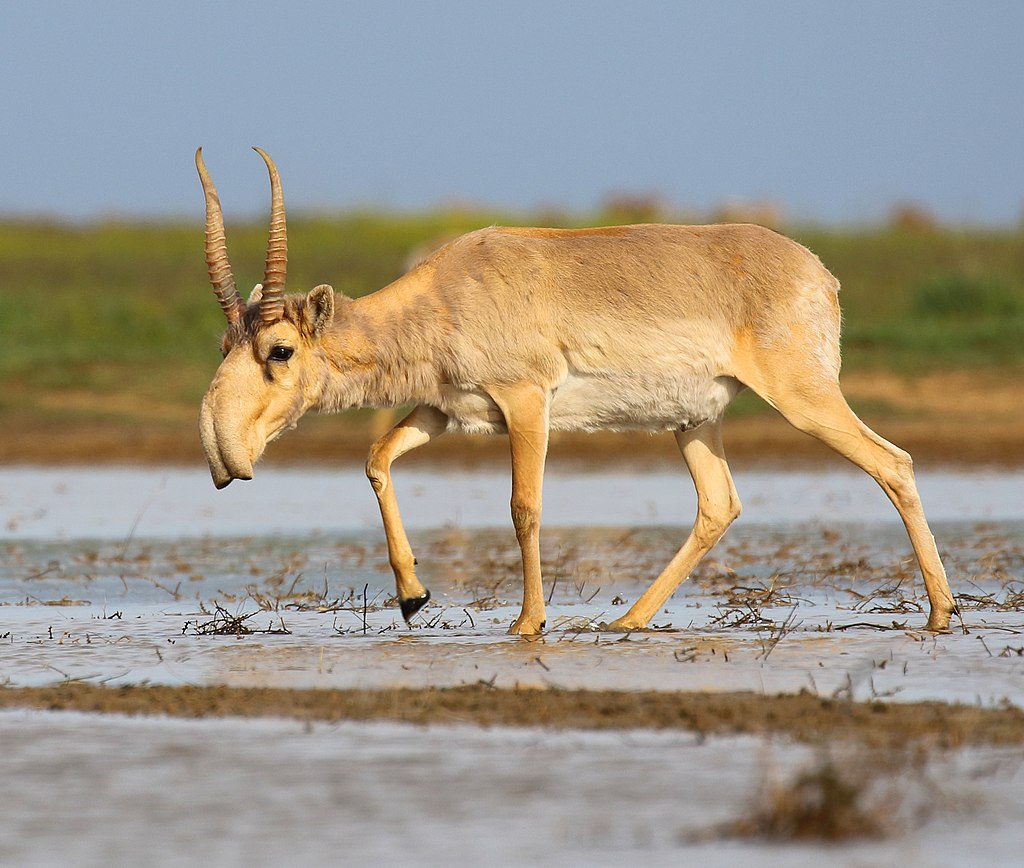
Under the chairmanship of the Governor of the Astrakhan region Igor Babushkin, the expert community discussed the topic of preserving the population of the unique antelope that lives in the local steppes - the saiga. The event was organized with the support of the service of nature management and environmental protection of the region.
— Increasing the level of environmental well-being is one of the priority areas for the development of the Astrakhan region. Among the most important tasks is the conservation of natural resources, including the saiga population. It is gratifying that the number of these Red Book animals in our region has been increasing over the past few years,” said Igor Babushkin, opening the round table.
He thanked LUKOIL for supporting the saiga conservation program in Kalmykia and the Astrakhan region. It is provided as part of an agreement between the oil company and the Ministry of Natural Resources of the Russian Federation: LUKOIL will allocate 30.5 million rubles to preserve the population of the relic antelope until 2024.
This year, at the expense of the oil company, in particular, conditions for watering will be improved - water intake wells in the Stepnoy reserve have been cleared. In addition, using unmanned aerial vehicles, scientists will be able to assess the size and structure of the saiga population.
During the meeting, the director of the representative office of the World Fund for Nature Valery Shmunk said that at present the population of saiga in the North-Western Caspian region is estimated at 11 thousand heads (in 1997 it reached 650 thousand). According to the expert, the reasons for their decline are poaching, degradation of pastures, and desertification.
— The main threat to saigas is still poaching. Thanks to the efforts of inspectors and round-the-clock protection, the territory of the Stepnoy reserve is free from poaching encroachments. We plan to increase the staff of the reserve's inspectors to ensure a three-shift work schedule, - said Sergey Smirnov, head of the service for nature management and environmental protection of the Astrakhan region.
According to the director of "Stepnoy" Vladimir Kalmykov, in order to prevent an increase of the area of open sands, the employees of the reserve are carrying out work to control the spread of the sands by planting juzgun bushes.
In 2021, World Fund for Nature Russia installed high-tech equipment near one of the artesians of the reserve, from which saigas and other animals come to drink, high-tech equipment that allows them to observe everything in real time. State inspectors monitor saiga herds, including assessing the state of the population during the periods of rut and mass birth of young animals. The information collected is entered into a special database, the analysis of which is carried out by specialists from the A.N. Severtsov Institute of Ecology and Evolution of the Russian Academy of Sciences (Moscow), helping to systematize and understand how effective the protection measures taken are.
Photographer: Andrey Giljov
